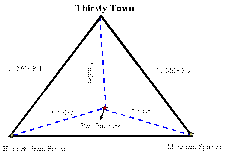 Today we discussed Weber's least cost theory and Hotelling's theory of locational Interdependence. Weber's least cost theory tries to explain why an Industry will locate where it does based on three main factors: agglomeration, labor costs, and transportation costs. Ultimately, based on these factors, an Industry will locate in an area where they can maximize their profits. Hotelling's theory of locational interdependence states that an Industry will locate based on where their competition locates. The competition adds economic gains to the area and ensures that each business will most likely improve their products (and ultimately give consumers choices).
0 Comments
Leave a Reply. |

 RSS Feed
RSS Feed
